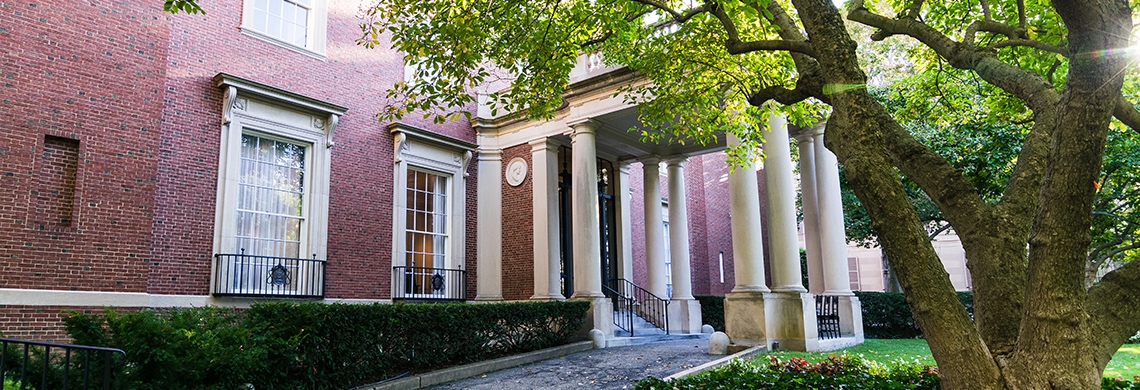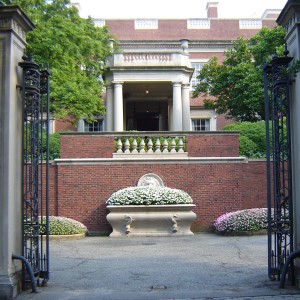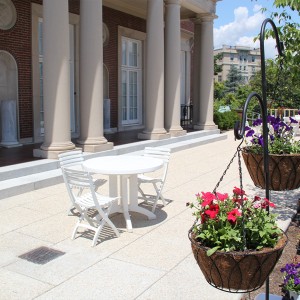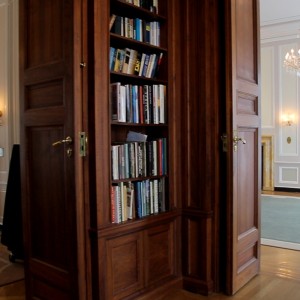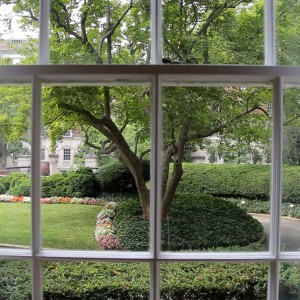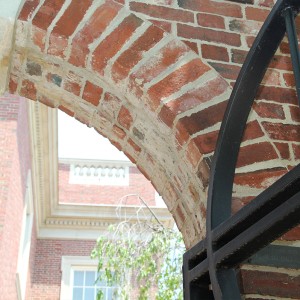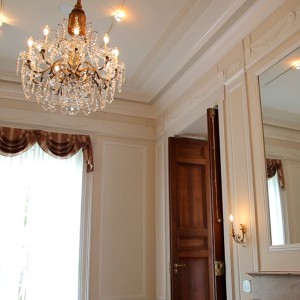White-Meyer House
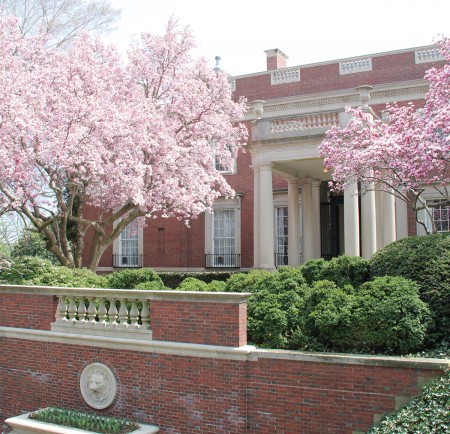
White-Meyer House was designed by renowned architect John Russell Pope, who designed the Jefferson Memorial, the National Gallery of Art (West Building) and the National Archives. An extensive renovation of White-Meyer House, which was completed in 1988, won an American Institute of Architects award for excellence. Great care was taken to retain the house's architectural integrity and preserve as much of the original garden as possible. Throughout the house, ceilings and walls have been refinished and architectural details and period hardware restored or recreated.
The house's beautifully proportioned public rooms were refurbished under a generous grant from The Morris and Gwendolyn Cafritz Foundation. Known as the Cafritz Galleries, these rooms now serve as Meridian's primary exhibition space, and are also used for meetings, seminars, and cultural programs.
The garden plaza, although converted into a parking area, preserves much of the original garden. Many of the yews, magnolias, witch hazels and weeping hemlocks were planted by the Meyer family. A brick and pebbled garden path on the south side of the house leads to an iron gate, with a circle representing the world and four lines representing the meridians. This gate leads to the Meridian House garden. The two properties are thus joined. They are made symmetrical and unified by two sculptures which face each other across the properties.
White-Meyer House is listed on the National Register of Historic Places
The Property grounds and first floors of both Meridian House and the White-Meyer house are open to the general public. If you would like to visit our grounds and public spaces, we request that you call in advance to insure the properties are available to view and are not closed for private events.
White-Meyer House History
White-Meyer House, at 1624 Crescent Place, has been home to two prestigious Washington families. The property was purchased in 1910 by distinguished American diplomat Henry White, who had been Ambassador to Italy and France. The red brick Georgian home was completed in 1912 at a total cost of $155,497.
During the Whites' tenure, the house was the scene of many significant social and historical events. Notable guests included Georges Clemenceau, Robert Cecil, Henry Cabot Lodge and President Warren Harding. In 1917, at the request of the Department of State, Ambassador White lent the house to the French mission of Marshall Joffre for its headquarters, and the French flag flew from the residence while high-level strategic meetings took place inside. Marshal Joffre later wrote that in this house "were sown the seeds of military and naval cooperation which bore fruit several months later on the battlefront."
When Henry White died in 1927, the property passed to his son, John Campbell White. Eugene Meyer, who subsequently became owner of The Washington Post, rented the house for several years before purchasing it in 1934. The Meyers, including Katharine Graham, spent their teenage years in the house. Prominent guests included Eleanor Roosevelt, Adlai Stevenson, Thomas Mann, Earl Warren, and John and Robert Kennedy.
After the Meyers' deaths, the house became the property of the Eugene and Agnes E. Meyer Foundation and was leased for use by the Antioch Law School Library. In 1987, it was purchased by Meridian International Center.
